Everything you need to know about the iconic and delicious mushroom.
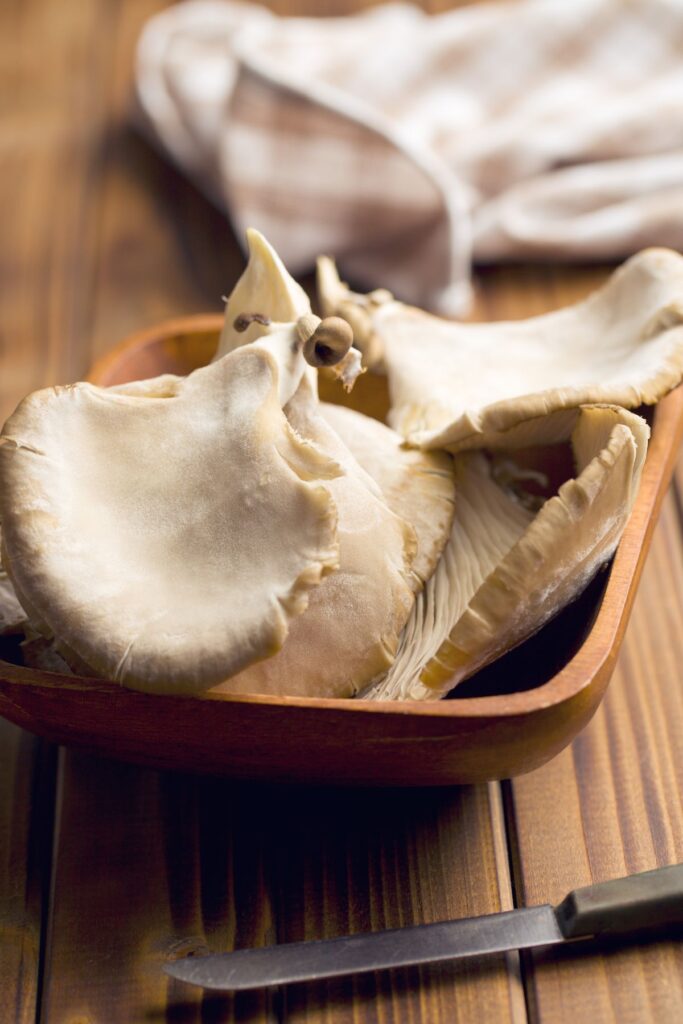
Oyster mushrooms are one of the most popular varieties of mushrooms in the world. They're delicious and incredibly versatile, so let's dive into how to make the most of these fungi.
Jump to:
- Everything you need to know about the iconic and delicious mushroom.
- What are Oyster Mushrooms?
- Where and How do They Grow?
- What do They Taste Like?
- Where Can you Buy Them?
- Types of Oyster Mushrooms
- Oyster Mushroom vs. King Oyster Mushroom
- Can You Forage for Them?
- How to Cook with Them
- Storage and Shelf Life
What are Oyster Mushrooms?
Oyster mushrooms are a type of edible mushrooms that are known for their oyster-like shape and delicate flavor. Often used in Asian cuisine but these fungi can be found in dishes worldwide. They're usually a gray or white color, but can also be pink, yellow, or even blue!
These mushrooms are pretty easy to grow, so you can often find them at farmer's markets or specialty stores. They're a great addition to soups, stir-fries, and pasta dishes. Bonus: they're also really good for you; they're low in fat and calories but high in antioxidants and other nutrients.
Where and How do They Grow?
Oyster mushrooms, scientifically known as Pleurotus ostreatus, are fungi belonging to the Pleurotaceae family. They are saprophytic, which means they grow on dead or dying wood, typically on hardwoods such as oak and poplar. They are also found growing on straw or sawdust in cultivation.
In terms of cultivation, oyster mushrooms are grown in a variety of ways, like on straw, sawdust, or even coffee grounds. It's usually happening in a controlled environment, such as a greenhouse or a grow room, and are usually grown using the spawn method. This will involve inoculating a substrate with spawn, which is essentially mushroom spores that have been grown on a grain, such as rye or millet. The spawn is mixed into the substrate and then incubated until the mycelium (the vegetative part of the mushroom) colonizes the substrate. Once the mycelium has colonized the substrate, it will begin to produce mushrooms.

In terms of where they thrive, oyster mushrooms prefer a cool, moist environment with temperatures between 60-70°F. They also prefer high humidity, so growers often use a humidifier to maintain the right humidity level. Depending on the growing conditions, they typically take around 7-14 days to grow.
Oyster mushrooms can be grown in many regions of the world, but they are most commonly cultivated in Asia, Europe, and North America. They're also grown in many other places where the temperature and humidity are suitable.
What do They Taste Like?
Oyster mushrooms have a delicate, slightly sweet flavor that's often compared to seafood, hence the name "oyster." They have a slightly crunchy texture when raw, and when cooked, they become tender and meaty.
They're versatile, so they can be used in a variety of dishes. For example, when sautéed with butter, oil, and garlic, they'll have a rich, savory flavor that pairs well with meats or pasta. When they're added to soups or stews, they'll absorb the flavors of the broth and add a nice depth of flavor. They can also be used to make vegetarian dishes; when marinated, grilled or fried, they can make a great substitute for meat in sandwiches or tacos.
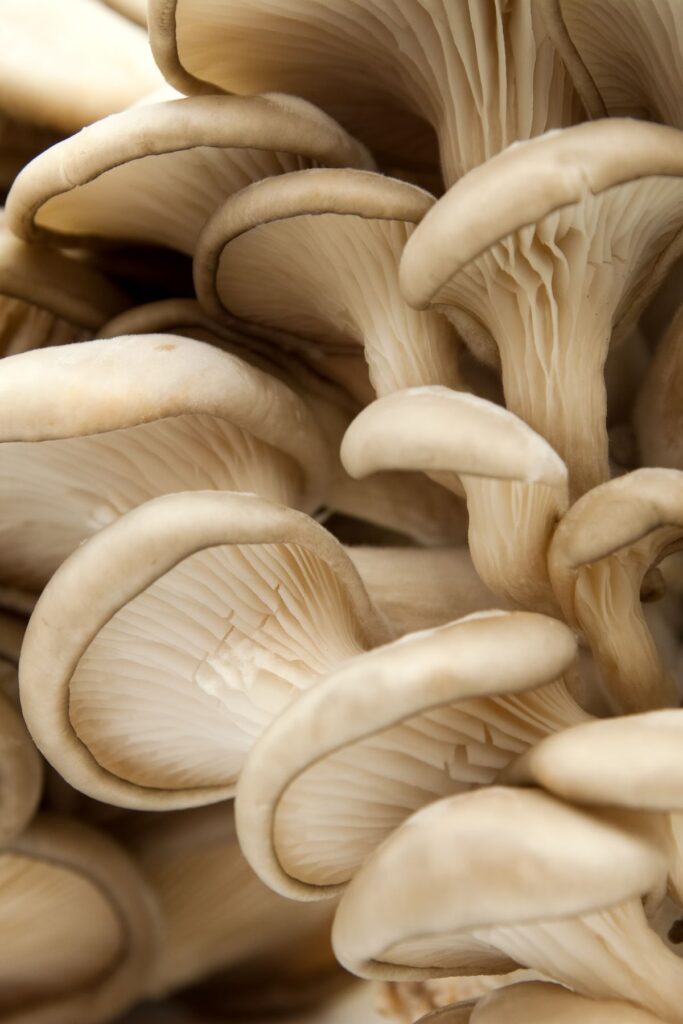
Where Can you Buy Them?
At this point, oyster mushrooms are pretty common, so they're easy to find. Here's where you can start looking:
- Grocery stores: You can usually find oyster mushrooms at most grocery stores, either in the produce section or in the pre-packaged mushroom section.
- Farmers' markets: If you're lucky, you might be able to find oyster mushrooms at your local farmers' market. They're a popular mushroom to grow, so you might be able to find them fresh and locally grown.
- Specialty stores: Some specialty stores, like health food stores or Asian markets, might have a wider selection of mushrooms, including oyster mushrooms.
- Online: There are many online shops where you can buy fresh or dried oyster mushrooms.
Types of Oyster Mushrooms
There are actually a few different types of oyster mushrooms. The most common one is the regular old gray or white oyster mushroom that you're probably used to seeing. But there's also a pink oyster mushroom, which is pretty cool because it's pink! It's got a slightly milder flavor than the regular white one.
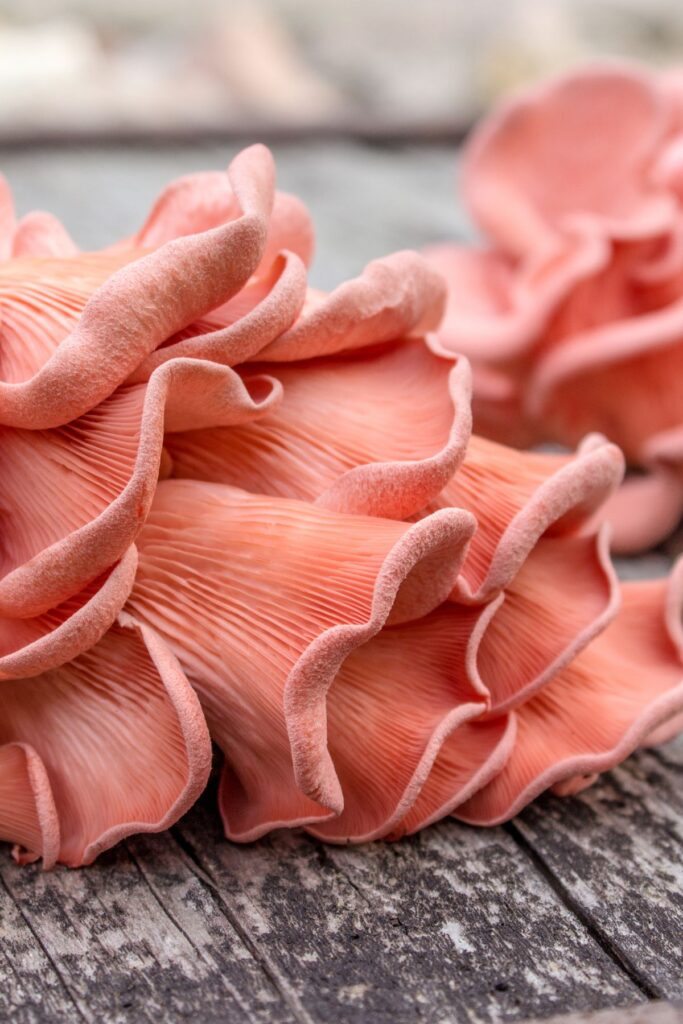
Another type is the yellow oyster mushroom. This one is yellow and has a more delicate flavor than the others. It's great for salads, soups and stir-fries.
And then there's the blue oyster mushroom, which is blue! It's a little harder to find, but it's got a really unique and interesting flavor. It's a little more firm than the others and has a slightly nutty taste.
All of them are edible and can be used in a wide range of dishes; it just depends on the taste you're going for and the color you like.
Oyster Mushroom vs. King Oyster Mushroom
Both of these mushrooms belong to the same family, but they are different in terms of shape, texture, flavor and how they're grown. Here's a quick breakdown:
Oyster mushrooms, scientifically known as Pleurotus ostreatus, are small to medium-sized mushrooms with a fan or oyster-like shape and a cap that ranges from gray to white in color. They have a delicate and slightly sweet flavor, and are often used in Asian cuisine.
King oyster mushrooms, scientifically known as Pleurotus eryngii, are much larger in size and have a thicker and meatier stem than oyster mushrooms. The cap is also much smaller in proportion to the stem. Their color can range from white to brown. They have a meaty texture and a nutty, delicate flavor. These mushrooms can be used in a variety of dishes but are often grilled or sautéed. They are also often used as a meat substitute.
Can You Forage for Them?
You can definitely forage for these guys in the United States. They grow wild on dead or dying hardwood trees, like oak and poplar. They're pretty common, so you might be able to find them growing in wooded areas, along the edges of forests, or even in your own backyard if you have a dead tree.
The foraging season for oyster mushrooms in the United States varies depending on the region and the weather conditions. In general, the best time to forage for oyster mushrooms is during the fall and winter months, usually between September and January. This is when temperatures are cool and humidity is high, which are ideal conditions for the mushrooms to grow.
It's important to note that the exact timing of the foraging season may vary depending on the location and the weather conditions. For example, in some regions, the season may start earlier or later, and in some areas, the season may be shorter or longer. Also, the season may be affected by factors such as droughts, floods or other weather events, so it's best to check with local experts or foraging groups for the most accurate information on the foraging season in your area.
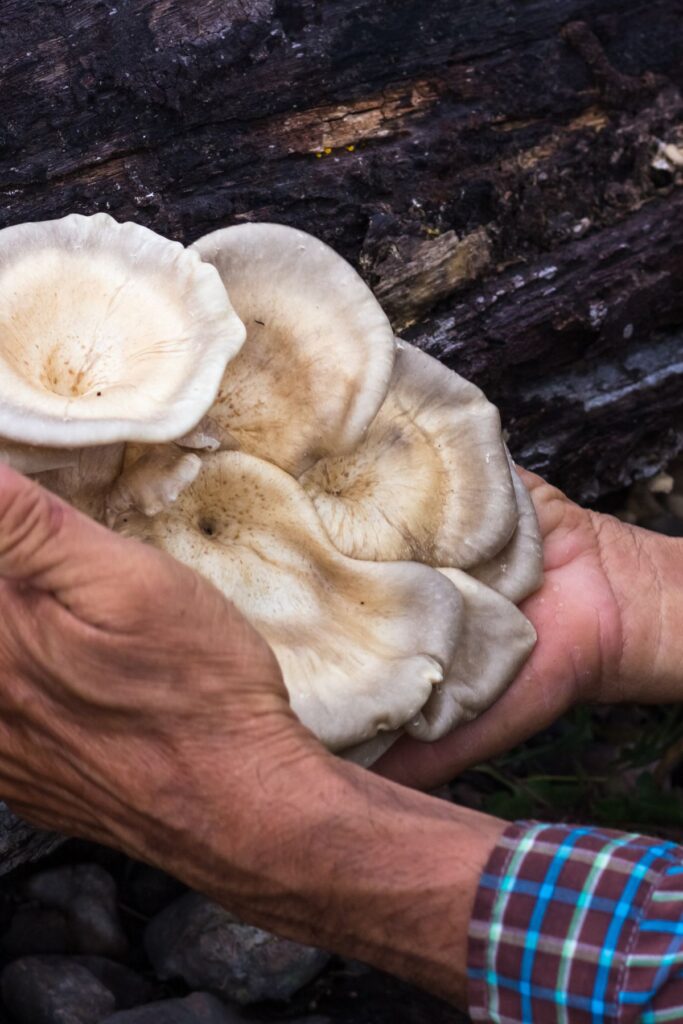
You'll want to look for clusters of mushrooms growing on the side of a tree or log; they're usually gray or white and have a fan or oyster-like shape. Just make sure you're 100% sure of what you're picking since there are some mushrooms that look similar but are not edible. So it's always a good idea to bring a guidebook or consult an expert before consuming wild mushrooms.
Also, remember that foraging can be hard work, so you might have to do a bit of hiking and exploring to find them. But it can also be really fun and rewarding. Plus, finding wild oyster mushrooms is a great way to get fresh, healthy, and delicious food straight from nature.
How to Cook with Them
There are so many amazing ways to use oyster mushrooms - the only limit is your imagination! Here are a few of my favorite ways to use them:
Sautéed with butter or oil and garlic: This is a classic way to cook oyster mushrooms, and it's super easy. Just slice them up and sauté them in a pan with some butter or oil and garlic. They'll get nice and crispy on the outside and tender on the inside. You can add them to pasta or risotto, or even just eat them as a side dish (try them with these amazing beef short ribs!).
Stir-fry: Oyster mushrooms are great in stir-fries because they hold up well to high heat and have a nice meaty texture. You can add them to any stir-fry you like, but they're especially delicious with ginger, garlic, and soy sauce.
Soup or stew: Oyster mushrooms are great in soups and stews because they absorb the flavors of the broth. They're especially good in a creamy mushroom soup or a hearty beef stew.
Grilled: Grilling oyster mushrooms is amazing; you can marinate them in a mixture of olive oil, garlic, lemon juice and herbs and then grill till they are tender and juicy.
Pizza topping: Oyster mushrooms make a great pizza topping because they have a nice meaty texture and a delicate flavor.
Fried: Breading and frying oyster mushrooms to make a crispy and delicious appetizer or a side dish is a great idea- you can also use them in this awesome mushroom sauce for steak.
In sandwiches or tacos: You can marinate, grill or fry them and they make a great meat substitute.
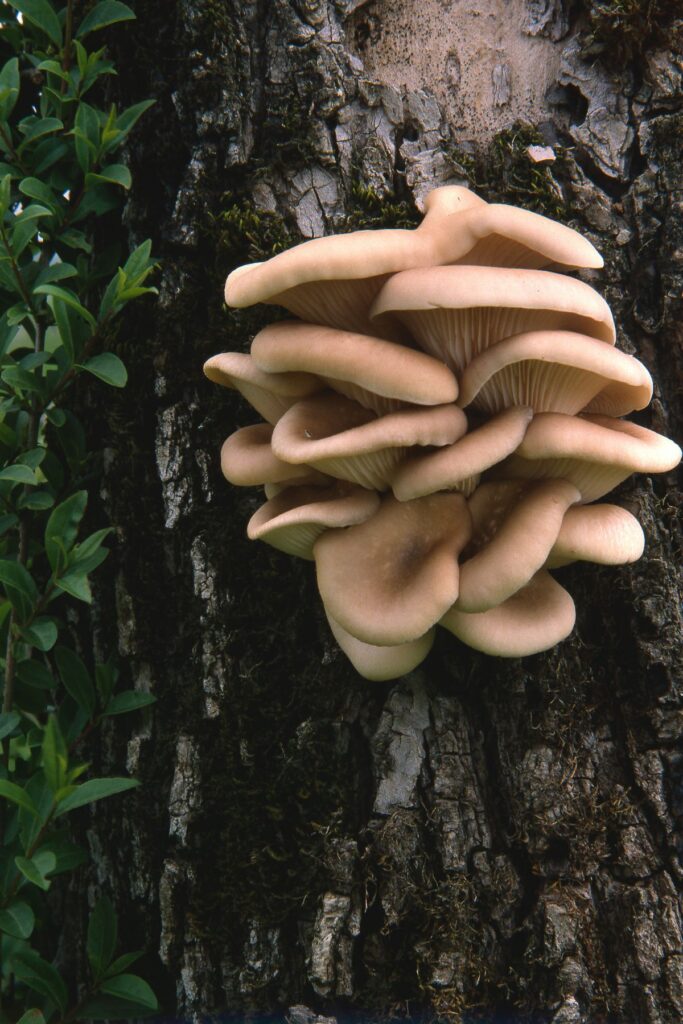
Storage and Shelf Life
When storing oyster mushrooms, you want to keep them dry; use a paper bag instead of plastic, and keep them cool in the fridge. You should aim to use them as soon as possible; they'll last around 5-7 days if stored properly. If you want to keep them for longer, you can dry them or preserve them in oil.
You should also check for any signs of spoilage before storing, like slimy or moldy mushrooms or any mushrooms that have an off smell. If you see any of those, it's best to just toss them.
Basically, keep them dry and cool and use them fresh; if not, dry them or preserve them for longer use. And always check for any spoilage before storing.
Hi, I'm Cara! I'm a food writer, journalist, and recipe developer. I'm obsessed good food, good wine, good cocktails and entertaining. I've picked up a few tips over the years, and love sharing them with others.


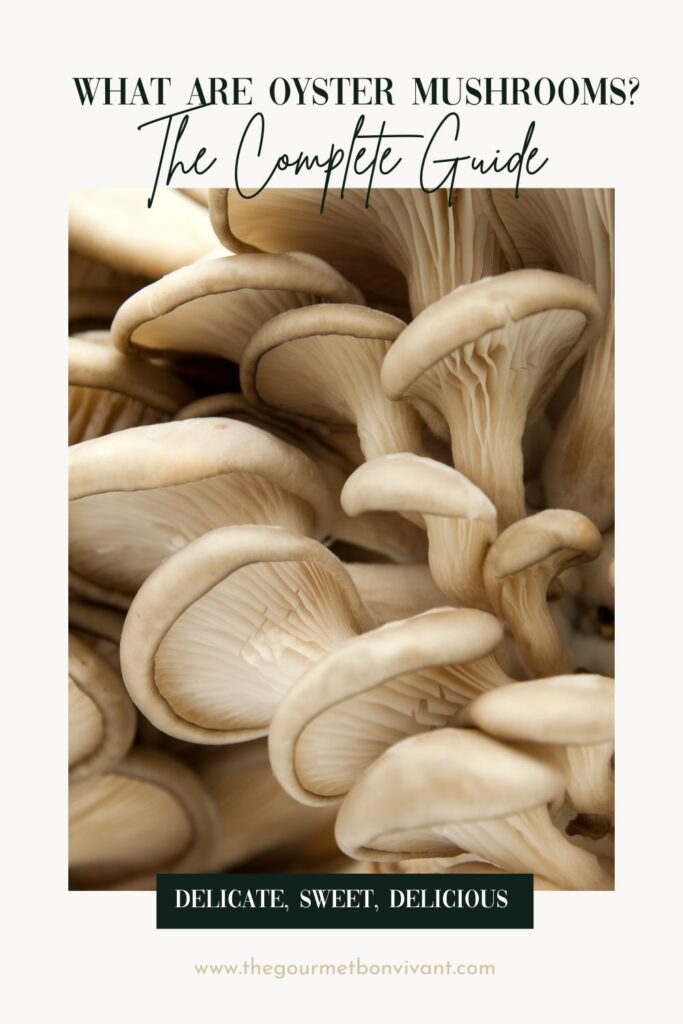

Leave a Reply